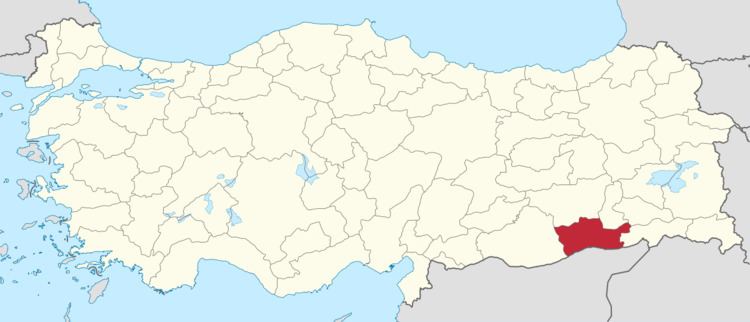Population 18 Area code 0482 | Website [1] | |
 | ||
Catalcam or Dayro Daslibo in Syriac is a village in Mardin province in the Dargeçit district of Turkey.
Contents
- Map of C387atalC3A7am Mahallesi 47750 DargeC3A7it2FMardin Turkey
- History
- Geography
- Demographics
- Economy
- Infrastructure
- References
Map of %C3%87atal%C3%A7am Mahallesi, 47750 Darge%C3%A7it%2FMardin, Turkey
History
Most of the history of Catalcam is tied with the Monastery of Mor Aho, or The Holy Cross, as it is located in the village of Catalcam. All the residents of the village live within its walls as well, because they moved out of the adjacent village next to the monastery and built their houses within the monastery for safety because it had large walls and a spacious courtyard which could be built in.
Mor Aho monastery was founded in the 6th century Ad by Mor Aho. Mor Aho was a native of Ras Al Ain born at some point in the 6th century. He was trained by a local monk in the liturgy of the Syriac Orthodox Church, and founded the monastery after escaping from his conscription into the Persian army in 573. The reason why the monastery is also called the monastery of the holy cross is because the monastery of Mor Aho is one of many sites which claim to have a fragment of the holy cross. Legend states that at some point after the founding of the monastery Mor Aho found a fragment of the holy cross in either Jerusalem or Constantinople. He managed to steal the relic by hiding it inside of a wound in his leg. After placing the relic in his leg, The wound miraculously healed, allowing him to escape with the fragment unnoticed. The monastery’s main church was built over the supposed site of the relic, which is believed to have been buried in an undisclosed location in that area. Therefore, the relic can't be seen and no one knows exactly where it is. Mor Aho is also responsible for the conversion of four villages in the area of Malayta, and for the foundation of another monastery in Tur Abdin. He died at an old age, and his tomb is located beneath the monastery.
After the death of Mor Aho, the monastery was abandoned during the Assyrian Genocide. Subsequent attempts to revive monastic life failed, with some of the monks being killed. After the Genocide, The residents of the village next to the monastery moved into the monastery and rebuilt their homes within its walls for security. After the Kurdish–Turkish conflict of the 1980s and 90s most of the people living there fled abroad to Germany and Sweden. The situation of the village by the end of the conflict in the late 1990s was so precarious that "in May 2000 Reverend Stephen Griffith stated that only 13 elderly residents still lived there". However, The situation of the village has improved since then. Some of the original residents have returned to the village and the ancient church was restored. A new well was sunk for the village by the local government as well.
Geography
It is 90 km away from Mardin, and 10 km away from Dargeçit. The village is on top of a hill, and is several miles from the next village, making it quite isolated.
Demographics
The population of Catalcam are Syriac Christians, being named as such due to the Syriac Orthodox denomination which they adhere to. Most of the people in the village live within the walls of a massive monastery, with the main village being destroyed and abandoned long ago. The monastery functions much like a walled city, with there being several densely packed houses, a cemetery and two churches located within its walls. This is likely as a result of the oppression Assyrians have endured in Turkey.
Economy
The economy of the village is based around agriculture and livestock.
Infrastructure
The village is incredibly rural and has no school, sewage, Clinic, or postal office. However, some services the village does have are modern asphalt roads connecting the village to the greater region, water supplied by a well, electricity and landline telephones.
